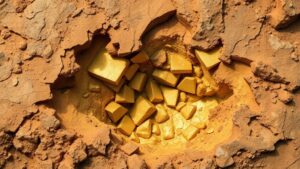Unearthing Native Artifacts in Mountain Passes Used for Migration
Unearthing Native Artifacts in Mountain Passes Used for Migration
Mountain passes have long served as vital corridors for human migration, facilitating journeys across challenging terrains. Within these landscapes, the excavation of Native artifacts not only illuminates past cultures but also provides insights into migration patterns, trade routes, and social structures of indigenous peoples. This article delves into the significance of these findings, the methods employed in their discovery, and the implications for understanding historical human movement.
The Importance of Mountain Passes in Human Migration
Mountain passes are naturally occurring openings in mountain ranges that allow for travel between two areas. Throughout history, these locations have been critical for indigenous peoples as they enabled movement between various ecological zones, providing access to different resources such as food, water, and materials for tools and shelter. For example, the Sierra Nevada mountain range in California has many such passes that were utilized for centuries by the Native American tribes, such as the Washoe and Mono, connecting them with the Sierra foothills.
Research conducted by anthropologists has highlighted that these passes facilitated not only migration but also cultural exchange, as different groups interacted along these routes. As an example, the presence of obsidian artifacts found in the Great Basin region indicates long-distance trade as these materials were sourced from specific volcanic areas, showcasing the complexity of intertribal relationships.
Unearthing artifacts in mountain passes requires a multi-disciplinary approach that incorporates archaeology, geology, and anthropology. Archaeologists frequently utilize survey techniques, which involve systematic examinations of the landscape to identify and collect artifacts. For example, a method known as stratigraphic excavation allows scientists to analyze different layers of soil, uncovering artifacts from various time periods while providing context for their use.
- Survey Techniques: Using systematic grid methods to catalog artifacts.
- Stratigraphic Excavation: Analyzing soil layers to determine chronological context.
- Remote Sensing: Employing technology such as ground-penetrating radar to visualize subsurface features without excavation.
Plus, collaboration with local indigenous tribes is increasingly recognized as essential in the excavation process. Their oral histories and cultural knowledge add depth to the interpretation of the artifacts, providing a more holistic understanding of the site. A significant case study can be seen at the Chaco Culture National Historical Park in New Mexico, where partnerships with Pueblo tribes have enhanced archaeological interpretation dramatically.
Case Studies of Artifacts Unearthed
Several notable discoveries illustrate the significance of artifacts found in mountain passes. For example, the excavation of the Pass of the North, a mountain pass in the southwestern U.S., yielded thousands of artifacts including pottery shards, arrowheads, and jewelry, dating back to the ancient Puebloan civilizations. These items revealed information about daily life, trade practices, and even migration routes, exhibiting a wealth of cultural heritage.
Another interesting case is the excavation at Icehouse Canyon in Arizona, where researchers uncovered tools and remnants that point to seasonal migrations for hunting and foraging. importance of these findings is profound as they not only document the indigenous peoples’ adaptation to the harsh climate of the region but also inform contemporary ecological studies regarding sustainable practices.
Implications for Future Research and Conservation
Understanding the significance of artifacts found in mountain passes goes beyond mere historical curiosity; it has crucial implications for current conservation efforts and educational initiatives. As climate change threatens many archeological sites, it is imperative to advocate for preservation strategies. By documenting these artifacts and their contexts, researchers can contribute valuable information to both scholarly work and public knowledge.
Plus, these findings provide opportunities for educational programs focused on Native American history and cultural contributions. Engaging local communities and schools in archaeological projects can foster awareness and appreciation of indigenous heritage, promoting cultural sensitivity and respect.
Conclusion and Actionable Takeaways
Unearthing Native artifacts in mountain passes reveals critical insights into the lives of historical peoples and their migration patterns. As archaeological techniques advance, and collaborations with indigenous communities deepen, our understanding of these historical migrations will continue to evolve. Important takeaways include:
- Recognize the historical significance of mountain passes as vital routes for migration.
- Support archaeological methodologies that incorporate indigenous knowledge for more comprehensive research.
- Engage in conservation efforts that prioritize the protection of archaeological sites threatened by environmental changes.
By fostering a commitment to understanding and preserving the rich history unearthed in mountain passes, we honor the legacy of those who navigated these challenging terrains centuries ago.



